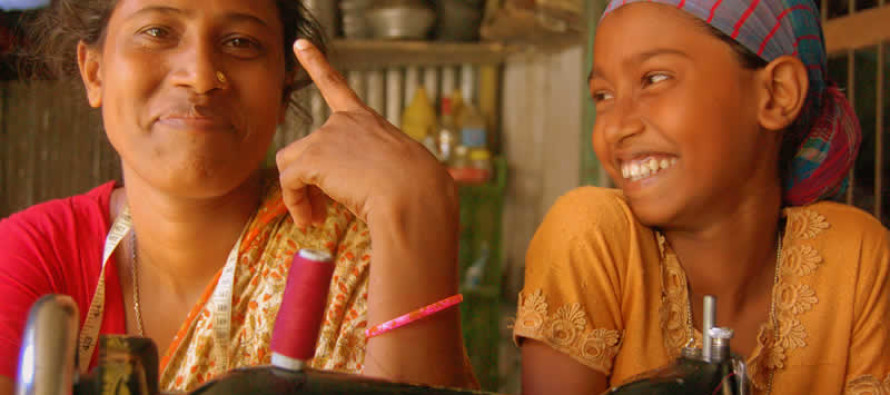Women's Status, Gender Equality: Bangladesh outshines India, Pakistan

Bangladesh outperforms India and Pakistan in many areas concerning women’s status and gender equality, though the picture of their access to reproductive health services, labour markets and decision-making is still bleak, said a World Bank report.
The report said Bangladesh stands out as a shining new example in South Asia achieving impressive gains in gender equality despite being a poor country.
After Sri Lanka and the Indian state of Kerala, Bangladesh dwarfs Pakistan and India in many areas, said the WB report titled "Whispers to Voices: Gender and Social Transformation in Bangladesh". It was launched yesterday at a function at the LGED auditorium.
Supported by the World Bank and AusAid, Power and Participation Research Centre (PPRC) arranged the launch ceremony.
Primary and Mass Education Adviser Rasheda K Chowdhury addressed the function as chief guest, with Junaid Ahmed, sector manager for Social Development of the World Bank, in the chair.
Xian Zhu, WB country director in Bangladesh, Rokeya Sultana, secretary of women and children affairs ministry, and Douglas Foskett, Australian high commissioner in Dhaka, also spoke on the occasion.
The report said despite the country’s achievement, women’s access to reproductive health services, labour markets, physical security and role in decision making need urgent attention.
"Between 1971 and 2004, Bangladesh halved its fertility rates. In much of the country today, girls’ secondary school attendance exceeds that of boys. Moreover, the gender gap in infant mortality has been closed," it said.
The report said the micro-credit revolution continues to boost women’s solidarity groups and earning potential, and a vast number of the young women are leaving their villages to work in garment factories. In earlier generations, young women were rarely seen outside their homes.
While gender inequalities in children’s health have diminished, Bangladeshi women still lack adequate access to reproductive health services. "Almost 90 percent of Bangladeshi women give birth at home, and over 86 percent do not have a skilled birth attendant to assist," according to the report.
It said there is already a huge gap in educational attainment between the rich and the poor, and the quality of schooling is an issue of concern.
"Poor children of either gender can rarely stay in school through to the upper grades. By Grade 9, when nearly 100 percent of children from rich families are enrolled, the ratio in terms of poor families is 20 percent," the report said.
The report found that despite increasing education and declining fertility, the rate of women’s participation in the labour force is very low although they have doubled in the last 10 years.
Women’s employment in South Asia is among the lowest in the world and Bangladesh is at the lower end of the South Asian spectrum.
The report said four percent of women (less than one fourth of men) of prime working age work for a cash wage in Bangladesh and in the casual agricultural labour market, women earn about 60-65 percent of men’s wages and 81.5 percent of the difference between men’s and women’s agricultural wages is unexplained.
About women’s role in decision making, it said most women’s influence over decision-making is confined to household functioning despite the presence of formidable women’s groups in rural areas.
Low access to land and property is an important part of their low voice in decision-making.
The report further found that there has been an increase in dowry over the last 30 years and less than half of the women felt safe going out alone in their villages.
Link Anim Anamika | Original Source Daily Star


